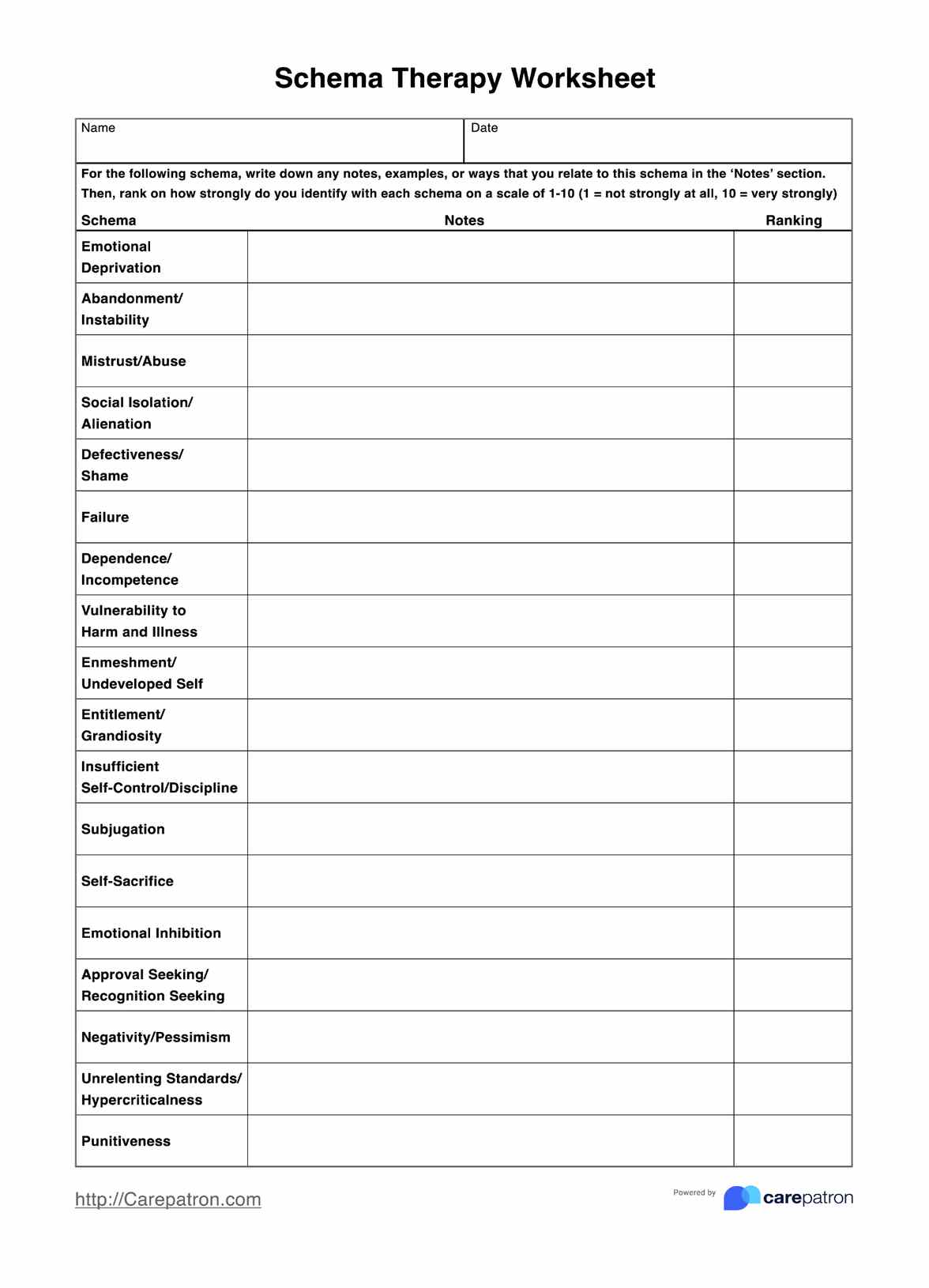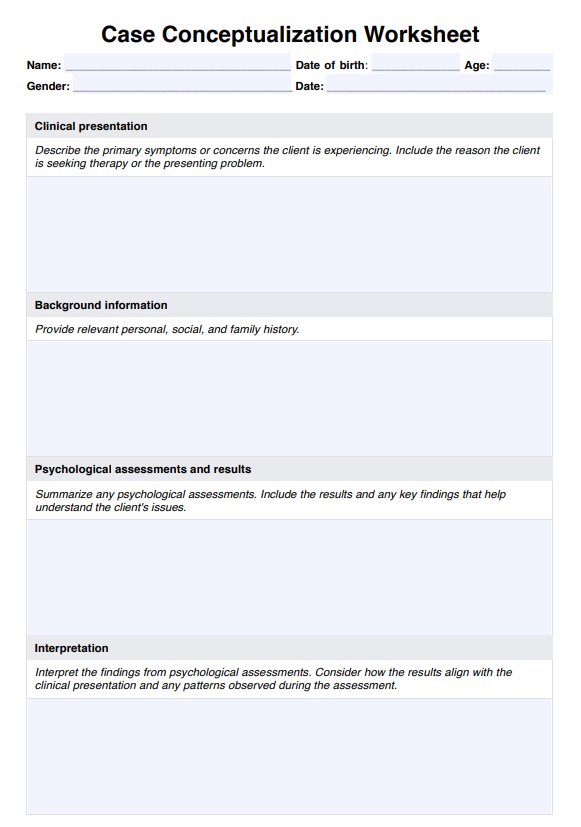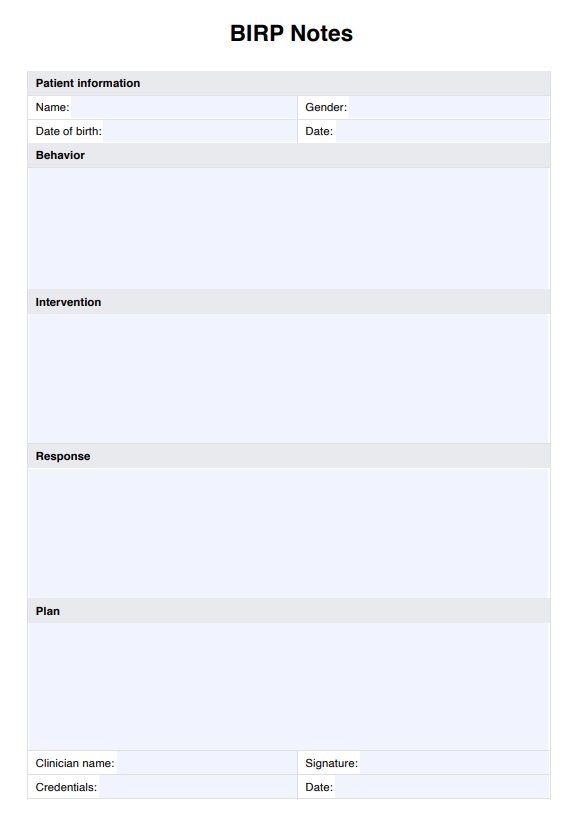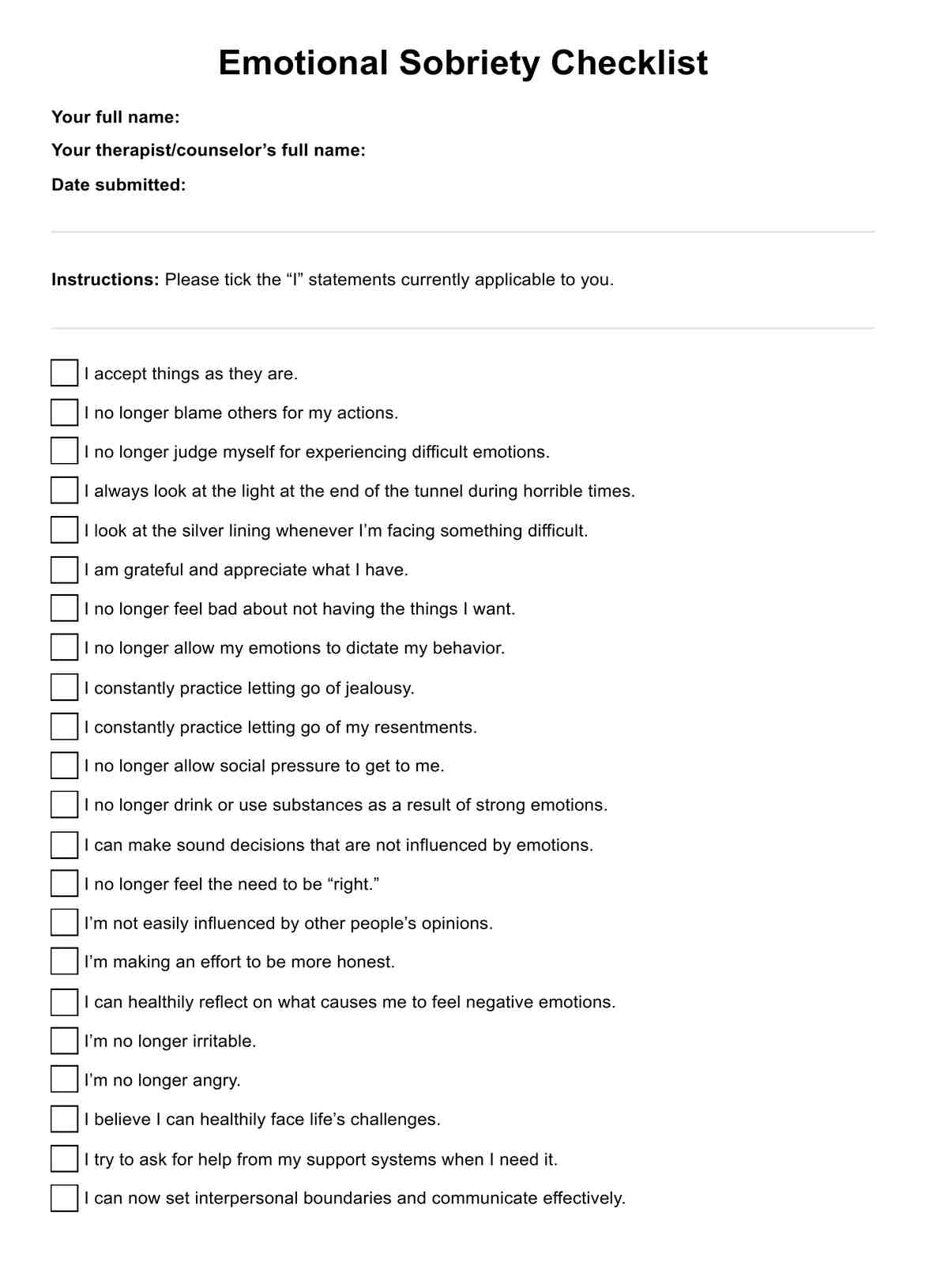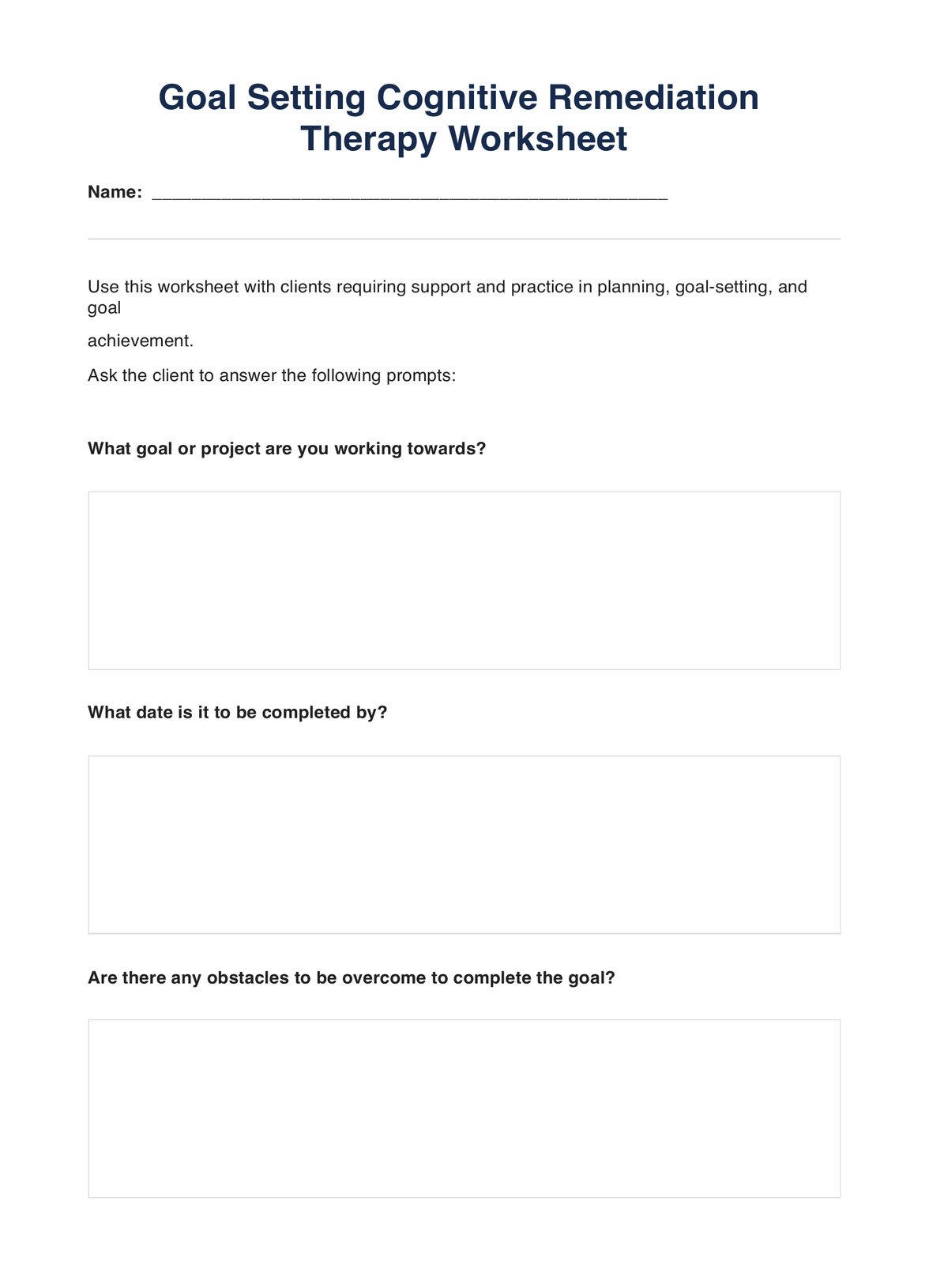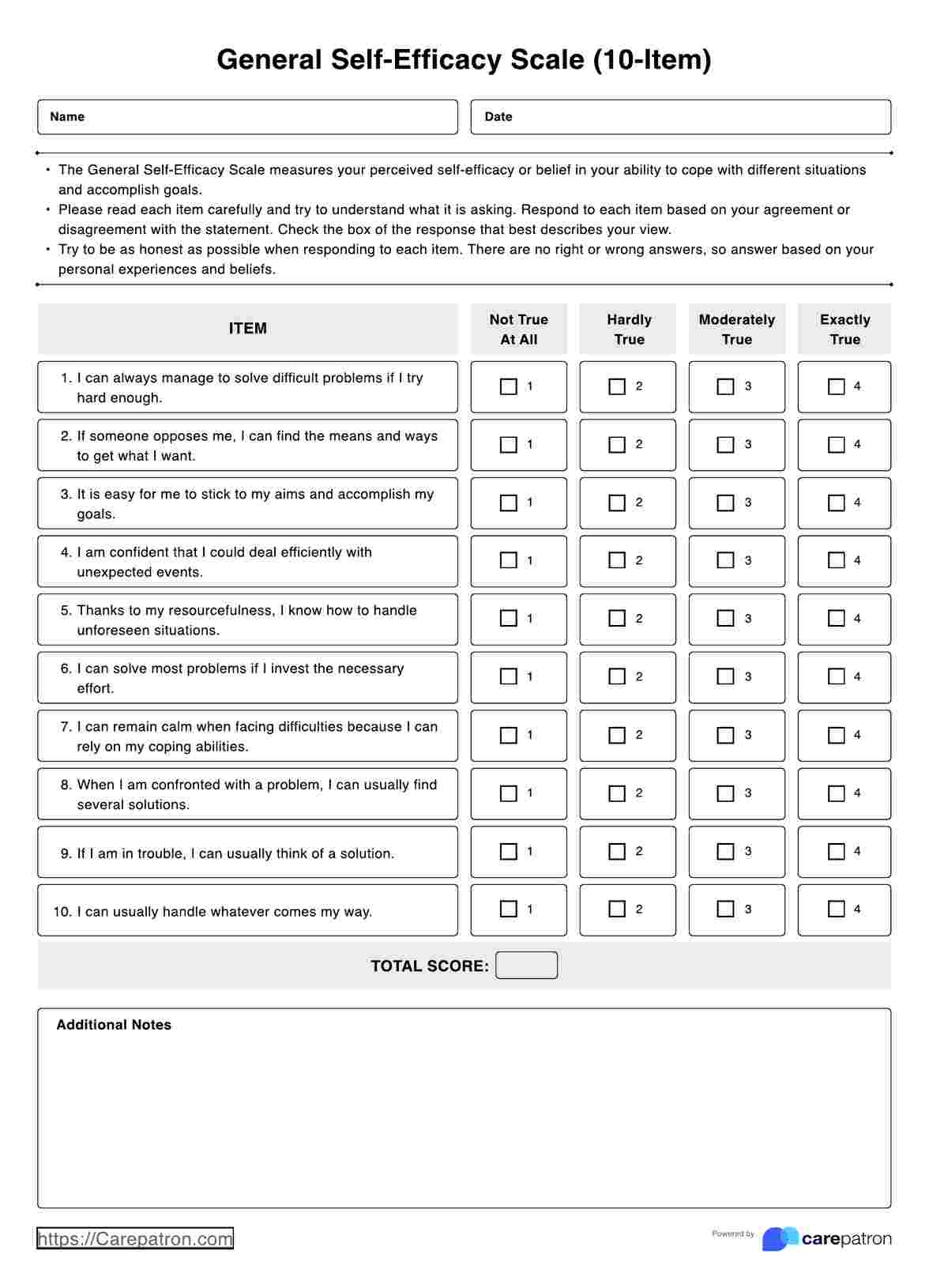ACT Bullseye Worksheet
Integrate the ACT Bullseye Worksheet to help clients reflect on and align their goals with their values.


What is acceptance and commitment therapy?
Acceptance and Commitment Therapy (ACT) is a form of cognitive-behavioral therapy that focuses on helping people become more psychologically flexible. The primary goal of ACT is to increase one's ability to be present, open up to complex thoughts and feelings, and take action toward living a values-driven life (Hayes et al., 2006).
ACT is built on the premise that attempts to control or eliminate distressing internal experiences (e.g., thoughts, emotions, physical sensations) can paradoxically lead to increased suffering and maladaptive behavior. Instead, ACT encourages individuals to be more accepting, open, and compassionate toward their internal experiences. This allows them to engage in valued actions, even tricky thoughts and feelings.
ACT Bullseye Worksheet Template
ACT Bullseye Worksheet Example
What is the ACT Bullseye Worksheet?
The ACT Bullseye Worksheet is used in acceptance and commitment therapy (ACT) to help individuals identify and clarify their values. This worksheet is designed to visually represent an individual's values, allowing them to see how their behaviors and actions align with what is most important to them.
This worksheet allows practitioners to help clients identify in which areas they are on track and in which areas they may be veering away from their stated values. It encourages self-reflection, highlighting where their actions are consistent with their deeply held values and where they might be acting in opposition to those values. This can uncover new opportunities for therapeutic interventions and action planning.
Understanding the ACT Bullseye Worksheet
The ACT Bullseye Worksheet is a straightforward tool, but unpacking its components can enhance its effectiveness in your practice. Here's a closer look at what's typically included:
Life domains
The worksheet is often divided into four core life domains: work/education, relationships, personal growth/health, and leisure. Together, these aspects promote and support an individual's holistic well-being.
Identifying core values
The worksheet allows individuals to brainstorm their core values within each life domain. These fundamental principles guide their decisions and shape what truly matters to them in each area. For example, someone might value "creativity" in their Work/Education domain, "honesty" in Relationships, and "adventure" in Leisure.
Self-assessment through bullseye rings
The worksheet often resembles a dartboard, with each life domain occupying a "section." Concentric circles radiate from the center (bullseye) outward. Individuals rate their current actions in each domain by placing a mark on one of these circles.
- Closer to the bullseye: A mark closer to the center indicates a strong alignment between their current actions and their core values in that domain.
- Further from the bullseye: A mark further away suggests a disconnect between their actions and values. The greater the distance, the larger the potential for misalignment.
Additional prompts
Some bullseye worksheets might include additional prompts to encourage deeper reflection. These prompts could ask individuals to:
- Briefly describe what living according to their values in each domain would look like.
- Identify any obstacles hindering them from living their values.
- Brainstorm specific action steps they could take to move their actions closer to their values.
How does our ACT bullseye worksheet work?
Our ACT Bullseye Worksheet aims to guide clients toward a more fulfilling life aligned with their values. Here's a step-by-step approach to get the most out of it:
Step 1: Introducing the worksheet
Briefly explain the worksheet's purpose – to explore core values and assess how current actions align with those values. Acknowledge that this can be a revealing exercise and assure clients there are no right or wrong answers.
Step 2: Guiding the client
Explain the different life domains and the bullseye target concept. Then, guide clients through brainstorming their core values within each domain. Encourage them to be specific and avoid using generic terms like "happiness." Ask clients to mark the bullseye circles for each domain, reflecting how well their current actions align with their values.
Step 3: Discussing the finished worksheet
Start by acknowledging their identified values. Then, discuss the distance of their marks from the bullseye in each domain. For domains with marks further from the bullseye, explore what might hinder them from living their values. Discuss areas where their actions align well with their values and where there might be a gap to bridge.
Step 4: Incorporating insights into next steps
Based on the discussed discrepancies, help clients brainstorm specific steps to move their actions closer to their values. This can also help practitioners craft a personalized ACT treatment plan. Encourage them to prioritize a few achievable goals and develop a plan to implement them. Finally, discuss potential obstacles and brainstorm strategies for overcoming them.
Benefits of completing the ACT Bullseye Worksheet
This worksheet can facilitate meaningful self-exploration and promote positive behavioral changes by guiding clients through identifying and prioritizing their values. Completing this worksheet further offers the following benefits:
Enhanced self-awareness
The Bullseye Worksheet's core value lies in its ability to cultivate self-awareness. This reflective process can help clients understand what is truly important to them, allowing them to identify their core values and recognize areas where their actions may not align with their stated priorities.
Prioritization and goal-setting
Once clients identify their core values, the worksheet helps them determine and prioritize which areas of life need the most attention. This clarity can be crucial for setting meaningful goals that resonate with their deepest desires rather than chasing external pressures.
Motivation for change
Recognizing a gap between values and actions can be a powerful motivator for change. The Bullseye Worksheet doesn't shame or judge but presents a clear picture that empowers clients to bridge the gap and live a more value-driven life.
Improved decision-making
With a clear understanding of their core values, clients are better equipped to make decisions that align with what truly matters to them. This can lead to greater feelings of control, satisfaction, and overall well-being.
References
Hayes, S. C., Luoma, J. B., Bond, F. W., Masuda, A., & Lillis, J. (2006). Acceptance and commitment therapy: model, processed,s and outcomes. Behaviour research and therapy, 44(1), 1–25. https://doi.org/10.1016/j.brat.2005.06.006
Lundgren, T., Luoma, J. B., Dahl, J., Strosahl, K., & Melin, L. (2012). The bull's-eye values survey: A psychometric evaluation. Cognitive and Behavioral Practice, 19(4), 518–526. https://doi.org/10.1016/j.cbpra.2012.01.004
Commonly asked questions
Practitioners can guide clients through the worksheet, facilitate discussions, and help them develop strategies to live more by their values.
Yes, the Bullseye Worksheet can be a valuable tool in various therapy modalities, focusing on values, goal-setting, and behavioral change.
Clients may struggle to identify or prioritize their values accurately, or they may resist making changes in their behaviors.


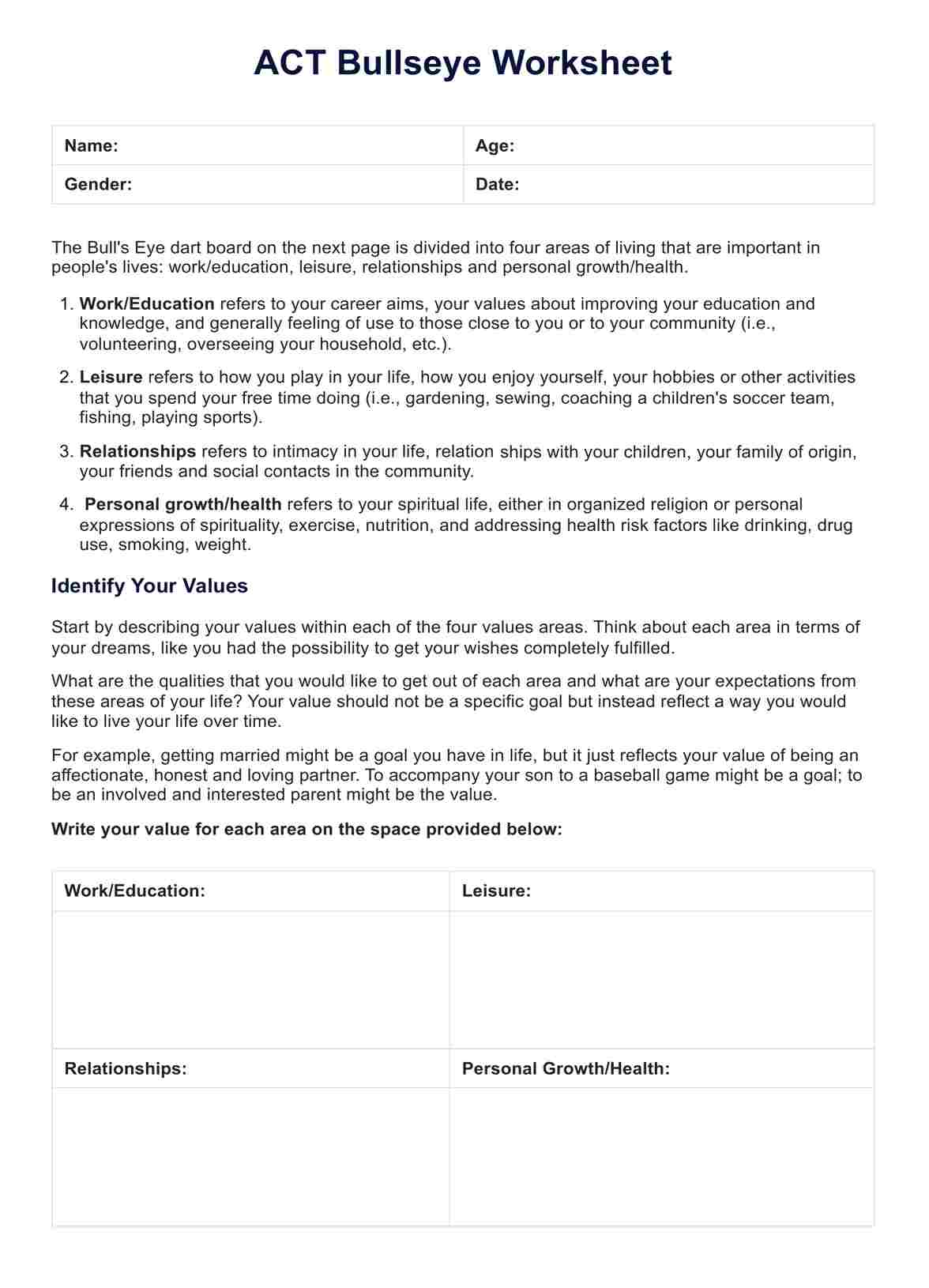
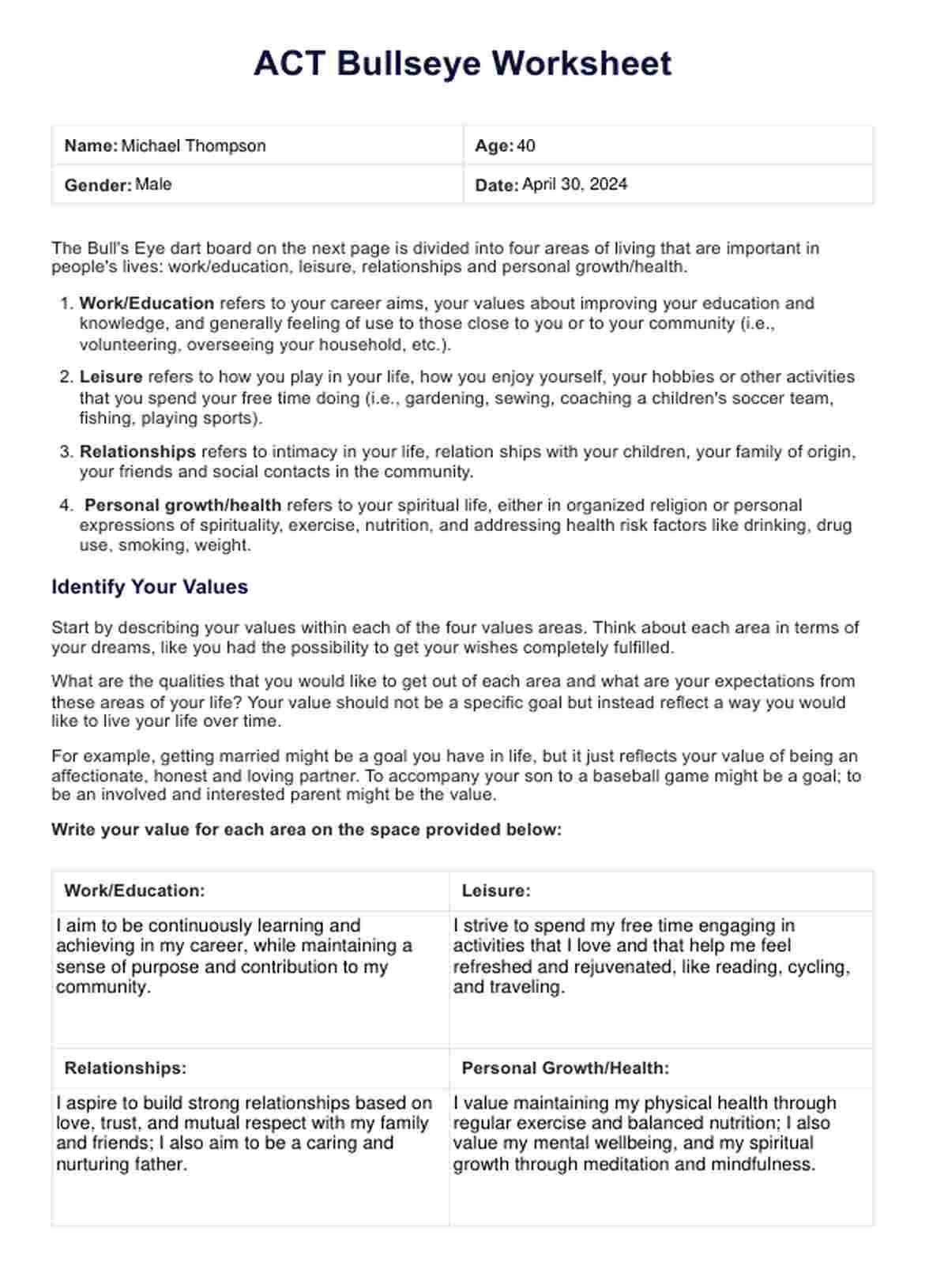

















-template.jpg)



















































































